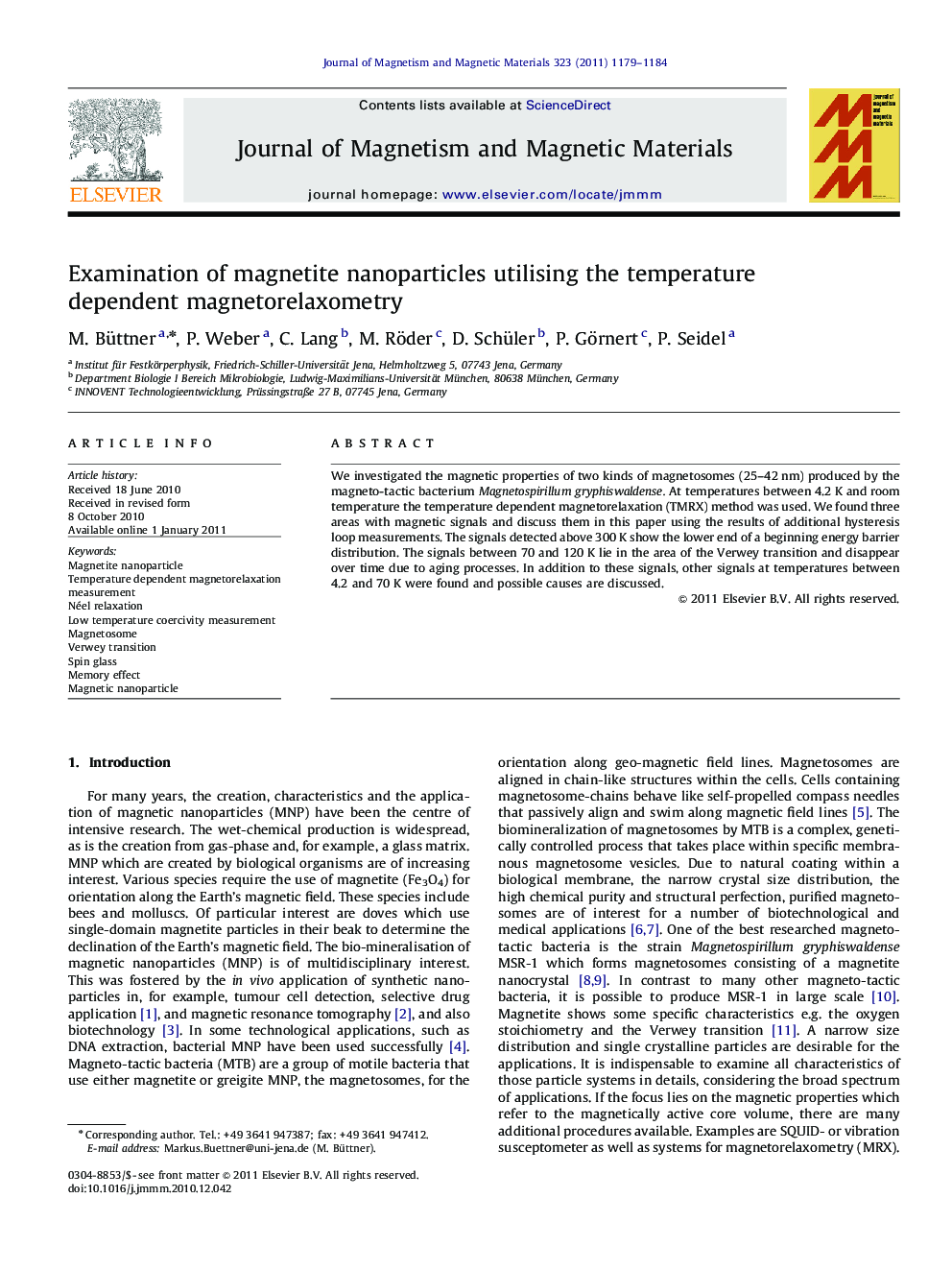| Article ID | Journal | Published Year | Pages | File Type |
|---|---|---|---|---|
| 1800854 | Journal of Magnetism and Magnetic Materials | 2011 | 6 Pages |
We investigated the magnetic properties of two kinds of magnetosomes (25–42 nm) produced by the magneto-tactic bacterium Magnetospirillum gryphiswaldense. At temperatures between 4.2 K and room temperature the temperature dependent magnetorelaxation (TMRX) method was used. We found three areas with magnetic signals and discuss them in this paper using the results of additional hysteresis loop measurements. The signals detected above 300 K show the lower end of a beginning energy barrier distribution. The signals between 70 and 120 K lie in the area of the Verwey transition and disappear over time due to aging processes. In addition to these signals, other signals at temperatures between 4.2 and 70 K were found and possible causes are discussed.
Research highlights► Temperature dependent magnetorelaxation (TMRX) method detects the Verwey transition. ► TMRX method is able to detect oxidation processes in magnetite nanoparticles. ► TMRX method detects the memory effect of the superspins at low temperatures.
